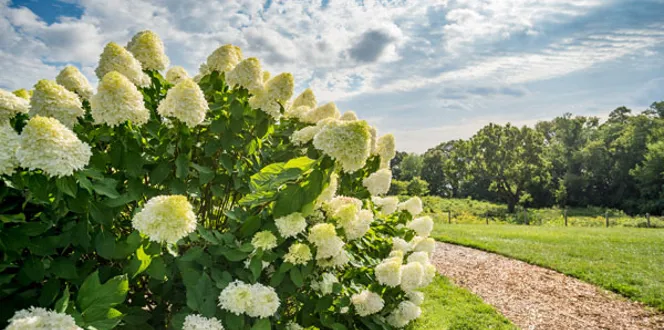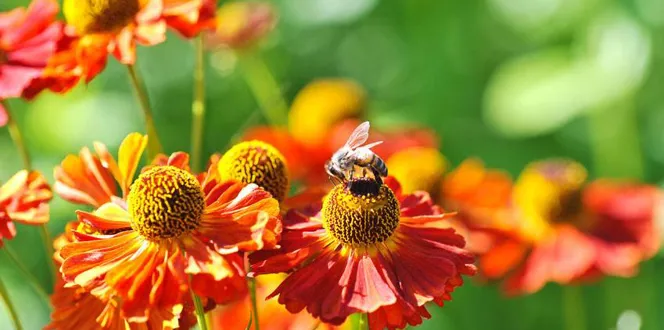Flashback to your elementary school science classes. Remember learning about stormwater runoff?
In case you need a refresher: whenever it rains, water runs off hard surfaces in your yard like rooftops or driveways. Instead of soaking into the ground, that stormwater travels along the landscape, picking up pollutants like fertilizer, oil, or chemicals as it goes. In your yard, runoff can erode or wear down garden soil. Beyond your landscape, polluted stormwater can eventually make its way to nearby lakes, rivers, or ponds. And get this—the EPA estimates that up to 70% of all water pollution comes from pollutants carried by stormwater runoff.
Stormwater runoff is bad for our yards and bad for the environment. The good news is there’s a way to manage it.
What is a rain garden? How do rain gardens work?
A rain garden is a shallow area designed to collect and filter stormwater runoff. Rain gardens catch water that would have flowed into the street or flooded your yard, and they naturally clean and release that water into the soil.
Rain garden benefits
Rain gardens are amazing structures that help us and the environment. They:
- Protect nearby lakes, rivers or ponds by collecting and filtering runoff before it can reach these areas
- Help prevent soil erosion, i.e., the wearing down of topsoil in your yard
- Help prevent potential floods by reducing the amount of water that ends up in a storm drain
- Can enhance your property value, since they’re both functional and attractive
How to build a rain garden in your yard
Step 1: Decide on rain garden placement
- Find out where water is coming from (like your roof or driveway) and where it goes (like a sunken spot in your yard, or the street) after a storm. Your garden should sit somewhere between the two.
- Ensure the spot is at least 10 feet away from your home, and at least 25 feet away from a septic system. Also, confirm there are no underground utilities in the spot you’ve chosen. If you’re not sure, call 811 to find out.
- Make sure the location gets full or at least partial sunlight.
Step 2: Check the soil
This step is super important because good soil is what makes or breaks a rain garden. Rain garden soil must be well-draining in order for the garden to do its job. To test your soil:
- Dig a hole about a foot deep and fill it with water. Ideally, the water should drain within 12 hours, and 24 hours at the absolute most. If it does, you picked a good spot—move on to step 3!
- If the water didn’t drain within a day or less, consider a different location. Soil types can vary quite a bit even within the same yard, so there may be a more suitable spot nearby. It's also possible to work with what you have. Vertical mulching can help loosen soil, and you can improve the soil with the right tools and amendments.
Step 3: Choosing plants for rain gardens
- Your rain garden should be filled with plants native to your region. Do some research to figure out what plants meet that need. For help, you can contact your local county extension office—they'll likely have a ready-to-use list of native plants.
- Select a mix of plants with different colors, heights, and bloom times to add dimension to your garden. Check out this blog post for rain garden design ideas.
Step 4: Size it out
- Rain gardens are usually sized anywhere from 100 to 300 square feet. To figure out what’s best for your yard, note that a rain garden can typically handle runoff from a surface 3 times its size. So, say your rain garden will be expected to collect runoff from a section of your roof that’s 600 square feet. To accommodate, your rain garden should be about 200 square feet in size.
Step 5: Construct your garden
With your location, flowers and size figured out, it’s time to dig.
- Use the rope to layout the size and shape of the garden. Most rain gardens are bean-shaped.
- Dig a flat hole about 4 to 8 inches deep. Make sure the bottom of the garden is leveled. Add compost or sand if needed and work it into the soil. If you aren’t adding materials, just till the soil to loosen it up.
- Add your plants, fill the garden back up with the leftover soil, and mulch the area.
Will a rain garden attract mosquitos?
Nope! Since water in rain gardens drains quickly, mosquitos aren’t drawn to them. They’d much rather hang around standing water that stays in place for a while, like in a birdbath.







